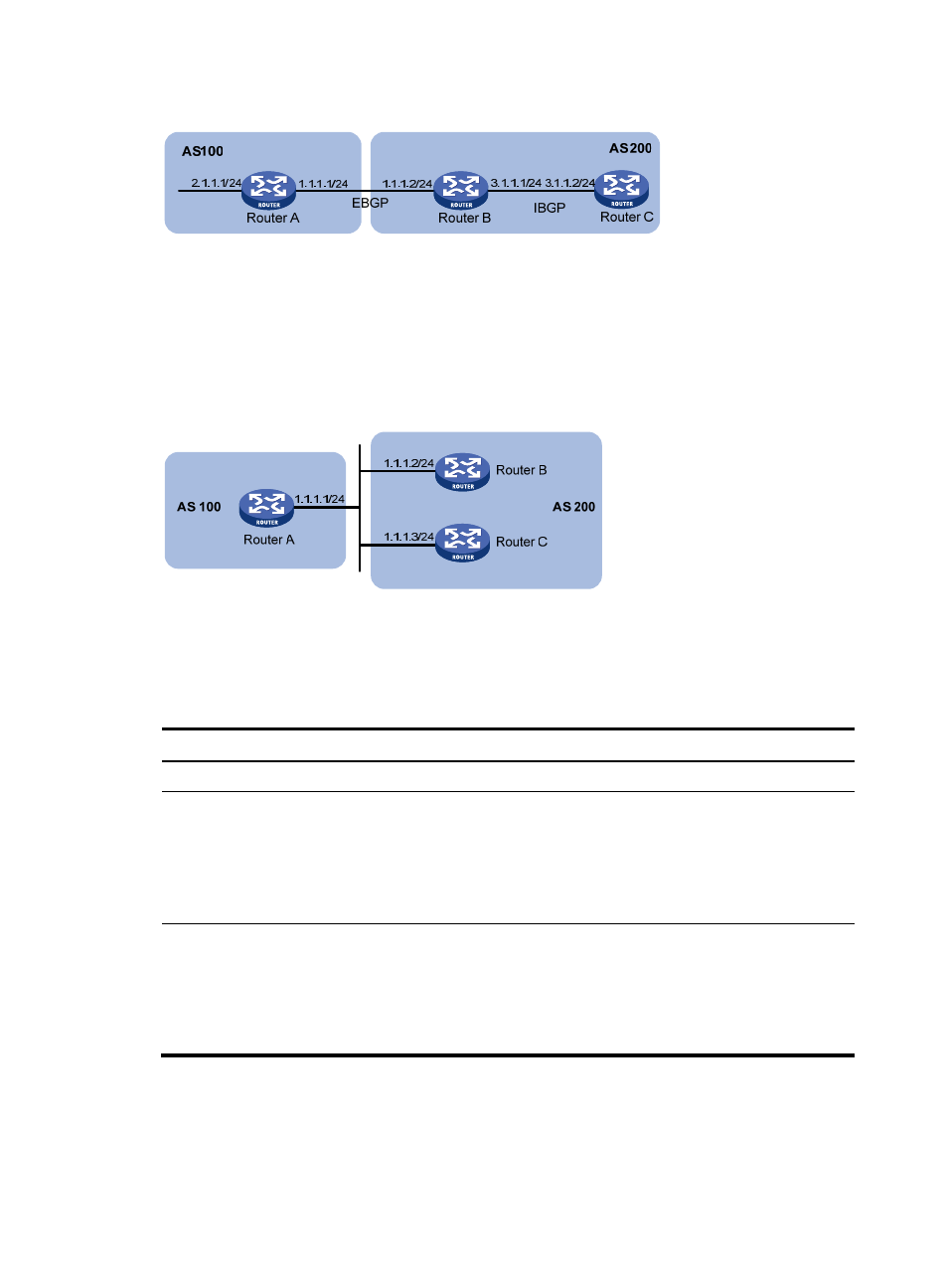H3C Technologies H3C S12500 Series Switches User Manual
Page 241

225
Figure 84 NEXT_HOP attribute configuration
If a BGP router has two peers on a common broadcast network, it does not set itself as the next hop for
routes sent to an EBGP peer by default. As shown in
, Router A and Router B establish an EBGP
neighbor relationship, and Router B and Router C establish an IBGP neighbor relationship. They are on
the same broadcast network 1.1.1.0/24. When Router B sends EBGP routes to Router A, it does not set
itself as the next hop by default. However, you can configure Router B to set it as the next hop (1.1.1.2/24)
for routes sent to Router A by using the peer next-hop-local command as needed.
Figure 85 NEXT_HOP attribute configuration
If you have configured BGP load balancing on a BGP router, the router will set itself as the next hop for
routes sent to an IBGP peer or peer group regardless of whether the peer next-hop-local command is
configured.
To configure the NEXT_HOP attribute:
Step Command
Remarks
1.
Enter system view.
system-view
N/A
2.
Enter BGP view or BGP-VPN
instance view.
•
Enter BGP view:
bgp as-number
•
Enter BGP-VPN instance view:
a.
bgp as-number
b.
ipv4-family vpn-instance
vpn-instance-name
Use either method.
3.
Specify the router as the next
hop of routes sent to a peer or
peer group.
peer { group-name | ip-address }
next-hop-local
Optional.
By default, the router sets it as the
next hop for routes sent to an EBGP
peer or peer group, but does not
set it as the next hop for routes sent
to an IBGP peer or peer group.
